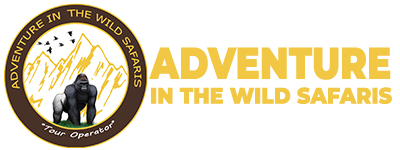What level of fitness should I aim for? What is the level of difficulty for gorilla trekking?
Every gorilla trek offers a unique experience, with some families residing near the park’s entrances and others nestled deep within the forest! The duration of your hiking journey can range from one to eight hours, depending on the family you choose to explore. Bwindi Park in Uganda features more rugged terrain compared to Volcanoes National Park in Rwanda. Share your physical fitness and aspirations with us, and we’ll guide you in choosing the perfect viewing experience.
Are there any age restrictions for gorilla trekking?
The minimum age for gorilla trekking in Rwanda and Uganda is 15 years, while in the Democratic Republic of Congo, it is set at 14 years. While you can certainly embark on an exciting gorilla safari with your kids, it can sometimes prove to be quite challenging.
Should I explore Rwanda, Uganda, Congo, or venture into both?
Bwindi’s gorillas in Uganda inhabit a lush, high-altitude rainforest, whereas the gorillas in Volcanoes National Park in Rwanda thrive in a vibrant bamboo forest. These habitats lead to unique behavioral variations and certainly create distinct experiences for hiking and observing wildlife. Financial considerations frequently influence our guests’ decisions to explore both parks or just one. If time and budget allow, we encourage our guests to explore both parks.
What guidelines should one follow while embarking on a gorilla trekking journey?
Indeed, the park rangers maintain a firm approach to overseeing interactions between gorillas and humans. The guidelines consist of:
Only a maximum of eight guests can experience the wonder of each habituated gorilla family at any given moment.
It is essential to keep a safe distance of at least seven meters or 23 feet from the gorillas. The gorillas will sometimes bend the rules. In such situations, it is wise to take a moment to reflect.
Refrain from actions that could create tension for the gorillas or display any behavior they might interpret as a challenge. One should honor their surroundings, communicate softly, and minimize extraneous actions.
Keep your distance from the gorillas and avoid any attempts to interact with them.
Avoid using flash cameras.
Refrain from eating or smoking.
Leave only your footprints in the sand.
What kind of clothing should I pack for my journey?
While exploring the forest, it is wise to keep your skin protected. Rain jackets are a must, as unexpected afternoon showers can surprise you at any time of the year. We equip our guests with thorough packing lists and share valuable clothing tips we have gathered from our years of exploring these forests.
Is it possible to adopt a gorilla?
In Rwanda or Uganda, you have the opportunity to ‘adopt’ a gorilla through the sponsorship initiatives of conservation groups like Friends of the Gorillas and the International Gorilla Conservation Program. Your permit fees play a crucial role in safeguarding these animals and their habitats through government efforts.
What is the price to observe gorillas in their natural habitat?
A gorilla permit is priced at $800 in Uganda, $400 in Congo, and $1500 in Rwanda, with fees collected by Park Officials. When you choose us, we take care of all the necessary permits for you. The total cost of our tour covers the permit, transportation, accommodations, most meals, and outstanding service from an English-speaking guide. Some services that offer lower prices might guide you to obtain a permit and find your own route using public transportation to Bwindi, Uganda. This may not be the best course of action. For an unforgettable safari experience, it is best to enlist the help of a tour operator. What might seem like an affordable gorilla tour could surprisingly lead to significant expenses in the end.
What is the accommodation experience like?
Every one of our tours offers the freedom to select accommodations that suit your budget, whether you prefer mid-range options or luxurious stays – the choice is entirely yours based on your price range. All accommodations feature clean and safe running water, fully self-contained.
“Budget” – You can find accommodation options like simple guesthouses or dormitory rooms in numerous cities across Rwanda. While the service and amenity standards may not be top-notch and you might find yourself sharing facilities with fellow travelers, opting for this level can significantly impact the cost of your adventure.
“Mid-range” – Primate expeditions Rwanda initially concentrated on the mid-range market, which has given it a unique knack for selecting the finest accommodations within this category. This is your ideal choice for cozy, self-sufficient (‘en suite’) lodging nestled in breathtaking spots that won’t break the bank.
“Semi-luxe” – This type of accommodation offers a more enjoyable experience than the standard mid-range options. The places share a resemblance, yet the intricacies are more finely tuned. These lodges frequently feature a swimming pool, too.
“Luxury” – The opulent accommodation is fully equipped, comfortable, and typically offers more space than the mid-range options. They frequently offer amenities such as swimming pools, skilled masseurs, and occasionally even personal butlers.
